Texas Railroad History - Towers 15 (Hearne), 140 (Tatsie) and 194
(Valley Junction)
Three junctions of the International
& Great Northern and Southern Pacific railroads in the vicinity of Hearne
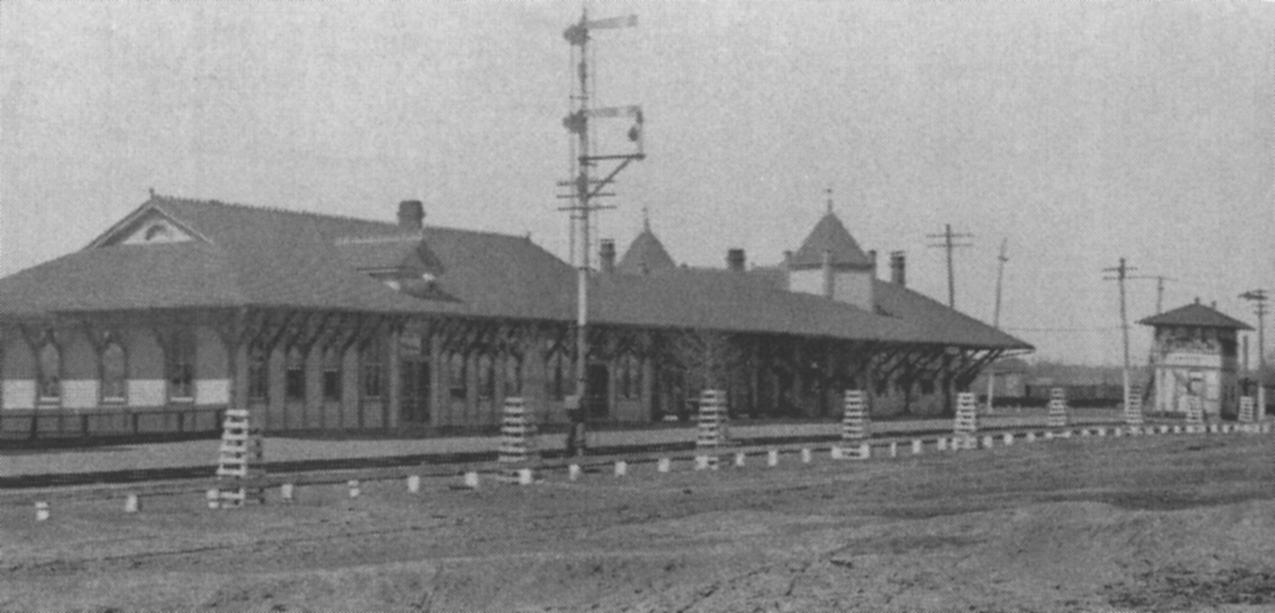
Above: This uncredited and undated
photo of the Hearne Depot and Tower 15 is from The
Texas Railroad by Wayne Cline (hat tip, Dennis Hogan). This is the
only photo found thus far of Tower 15. According to David Bernstein in
Southern Pacific Railroad in Eastern Texas
(Arcadia Publishing, 2011), the tower was closed in 1935. Presumably the tower
structure was removed shortly thereafter. The interlocker controls (and most
likely the plant as well) were relocated to the depot. As Tower 15 was an
electrical interlocker, immediate proximity to the tracks was not required.
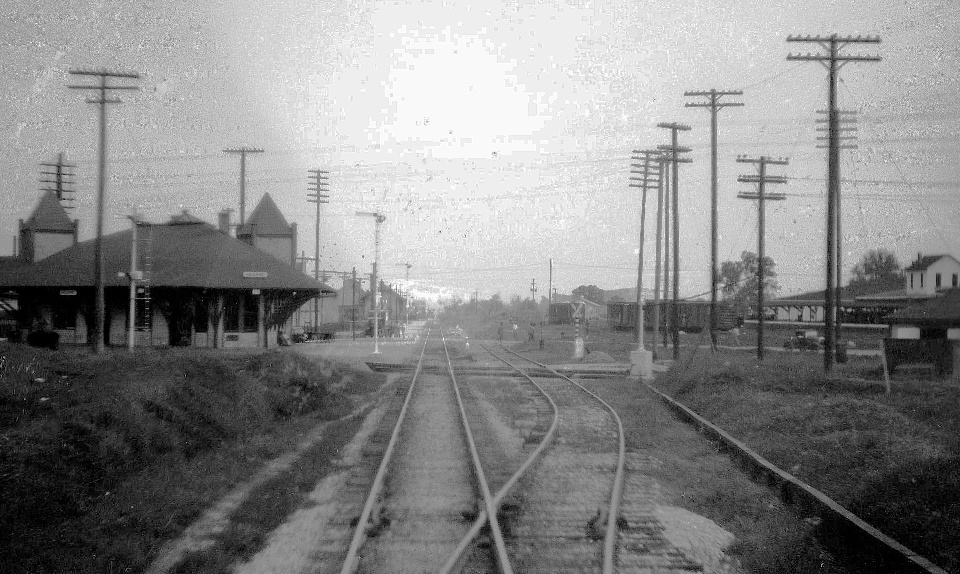
Above: This image was taken by
John W. Barriger III from the rear platform of his business car on the tail end
of a northbound International & Great Northern train at Hearne. Facing
southwest, the Union Depot is visible on the left just beyond the Houston &
Texas Central double track crossing. Significantly, Tower 15 is not visible,
indicating the photo was taken after the tower closed in 1935. With the
interlocker relocated inside the station, a small sign displaying "15" hangs
outside below the "Hearne" sign facing the crossing. The tower had been near the striped pole (with
crossbuck on top) right of center.
(John W Barriger III National Railroad Library)
Below: Everett L. DeGolyer, Jr. snapped this photo
of the Hearne Union Depot on June 9, 1958. As in the above photo, the depot
displays the "15" symbol indicating it housed the Tower 15 interlocker. Detailed
drawings of the depot made by Texas A&M University in 1979-80 for the Historic
American Building Survey state that "The building was designed with its two
long walls parallel to the tracks, and an interlock signaling room facing north
at the apex of the plan." Instead of being mounted on the roof as in
the earlier photo, the "Hearne" sign now hangs from the edge. (DeGolyer Library, Southern Methodist University)
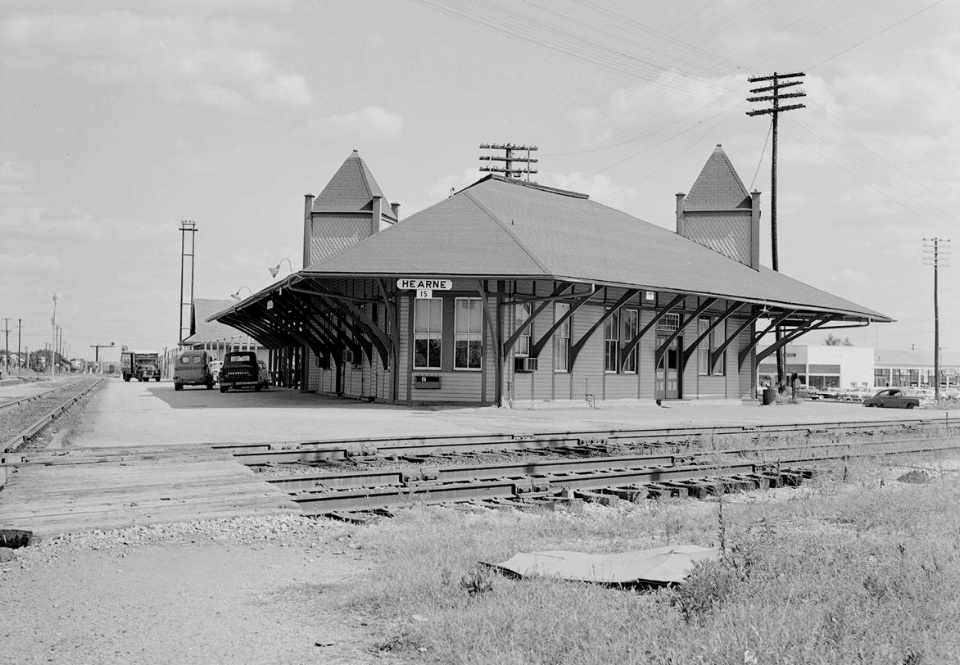
Hearne is the rural rail crossroads of Texas, the
population center of an area that by 1900 already hosted three crossings
of the same two railroads. The town of Hearne was founded on land donated by Christopher C. Hearne who was
trying to attract a railroad by offering land and right-of-way through his
property. The first to arrive was the Houston and Texas Central (H&TC)
Railway. It had started in Houston and built
northwest to Millican, 20 miles south of Bryan,
where progress stopped for the Civil War. After the war, construction resumed
into Bryan in 1867 and Hearne in 1868 as the H&TC built north toward the Red
River (which was reached at Denison in 1873.)
In August, 1870, the International
Railroad was chartered and four months later, it started building east from
Hearne toward Palestine with plans to connect northeast Texas with
Laredo. Hearne was a populated settlement by then and was most likely chosen as the construction base because materials could be
brought into Galveston and Houston by steamship and sent north on
the H&TC. In 1873, the International Railroad merged with the Houston & Great
Northern Railroad to form the International & Great Northern (I-GN) Railroad.
In 1881, the I-GN completed the line from Palestine to Laredo via Hearne,
Austin
and San Antonio.
On July 16, 1903, Tower 15
was approved by the Railroad Commission of Texas (RCT) to control the crossing
of the H&TC and the I-GN at Hearne. It housed a 25-function electrical
interlocking plant manufactured by the Taylor Signal Co. of Buffalo, New York.
Both tracks through Hearne existed prior to enactment of the new state law in
1901 that set requirements and granted RCT regulatory powers over railroad
crossings and interlockers. Hence, by law, the two railroads shared
the capital expense for Tower 15. Typically, one company took the design lead,
and the architecture of Tower 15 in the photo above
suggests construction was handled by Southern Pacific (SP) which had gained
ownership of the H&TC in 1883. While the tower image lacks clarity, it certainly resembles
other SP
towers in Texas. Also, RCT records state that H&TC
had primary responsibility for staffing Tower 15, generally an indicator of
which railroad designed and built the tower. At the time, Hearne became the
third interlocking tower at a crossing of these two railroads (after
Tower
7 in College Station and Tower 9 in Navasota),
yet two additional interlockers would be established in the Hearne area.
The Hearne & Brazos Valley (H&BV) Railway was chartered in 1891 by local cotton farmers desiring
reliable transportation from Moseley's
Ferry on the Brazos River to Hearne. Moseley's
Ferry was where the Old San Antonio Road crossed the river (a
site now occupied by the State Highway 21 bridge.) In 1892, the 16-mile line
was completed by H&BV, but instead of going into Hearne, it went north to
a connection with the I-GN four miles west of Hearne, a location that
became known as Valley Junction. In 1899, the H&BV was almost completely
destroyed by a Brazos River flood. Reconstruction began immediately, but the
routing was altered. Instead of going to Valley Junction, the north
end of the line was routed directly into Hearne where the H&BV
could make
connections with both the I-GN and the H&TC. The new tracks into Hearne
departed the existing H&BV grade at Tatsie, resulting in 3.3 miles of unused
H&BV grade from Tatsie north to Valley Junction.
The abandoned H&BV grade
did not stay unused for long. It was acquired by the Calvert, Waco & Brazos
Valley (CW&BV) Railroad which was building south from Calvert to Valley
Junction, which it reached in 1900. In 1901, the CW&BV crossed over the I-GN
at Valley Junction and continued south, laying tracks on the former H&BV grade.
At Tatsie, where the new H&BV tracks came in from Hearne, the CW&BV crossed over
to become parallel to and east of the H&BV.
Track-laying continued 5.2 miles farther south to the community of Mumford. From
Mumford, the CW&BV construction curved southeast toward Bryan while the existing
H&BV line turned due south toward Moseley's Ferry. The CW&BV completed its line to Bryan
in 1901, and also built 29 miles from Calvert north to Marlin that same year,
shortly before it was acquired by the I-GN. Under the I-GN, the line was
extended south from Bryan to
Navasota to Spring, where it connected with the I-GN
main line from Palestine to Houston. To the north, the I-GN extended the line from Marlin to
Ft. Worth
via Waco, resulting in a Houston - Ft. Worth main line via Spring,
Navasota, Bryan, Valley Junction, Marlin and Waco. Since Valley
Junction had become a crossing of two I-GN main lines, a depot was built for connecting passengers.
The I-GN was acquired by the Missouri Pacific (MP) railroad in 1925 and was
fully merged into MP in 1956. On October 31, 1947, Tower 194
was established as an automated interlocker to control the crossing
at Valley Junction. Although this was not a crossing of two
different railroads, railroad companies had begun to solicit approval for any
new and modified interlockers as a result of a Railroad Commission policy change
in the 1920s. The interlocker override controls were most likely located inside the
passenger depot which no longer exists.
In 1914, the H&BV was acquired by
SP. This was the first step in SP's plan to build a faster route between Memphis
and Los Angeles. Traffic moving south on the H&TC had to go to Houston to reach
the Sunset Route to Los Angeles, but Houston had become so congested that
through trains were experiencing significant delays. SP needed a bypass around Houston
for this high priority traffic.
Upon
acquiring
the H&BV, SP proceeded to bridge the Brazos River at Stone City (near Moseley's Ferry.) From there, new tracks were built to Giddings
where a connection was made to the San Antonio & Aransas Pass (SA&AP)
Railway, a former SP railroad. SP had acquired the SA&AP in 1892
and operated it for more than a decade before being forced to divest
by an unfavorable court ruling (a story best told
elsewhere; SP would re-acquire it in 1925.) SP negotiated rights on the
SA&AP between Giddings and
Flatonia where SP trains could return to company rails on
the Sunset Route to San Antonio. The route from
Hearne to Giddings to Flatonia became known as
the Dalsa Cutoff because it permitted SP's Dallas-San Antonio traffic to bypass
Houston.
On February 12,
1929, a cabin housing an 8-function mechanical interlocker designated Tower 140 was
approved by RCT
at Tatsie to control the crossing of the Dalsa Cutoff and the I-GN. Since cabin
interlockers were not staffed, the signals would be left positioned for
continuous operation on the busier route. Train crews on the other route would
stop at the crossing and temporarily change the signals to permit their train to
cross. Although documentation is lacking, given that the Dalsa Cutoff was an
important bypass for high priority traffic (and remains so today), it seems
likely that the signals were lined against I-GN trains so that SP trains stopped
only if the crossing was actually occupied.
The normal complement of functions
in a minimum standard interlocker was twelve: four distant signals, four home
signals and four derails. For this cabin interlocker, four of these functions
were omitted. Assuming the signals were normally lined to present a "Proceed"
indication on the SP tracks, the most likely omissions were the distant signals
and derails on the I-GN tracks (two each.) The I-GN would not need distant
signals; a fixed sign was sufficient to remind I-GN trains of the upcoming
crossing for which they always stopped for a crewmember to enter the
cabin and reverse the signals. And since I-GN trains always stopped short of the
crossing, there was no need for derails to prevent an
accidental collision.
SP's operating company for its Texas and Louisiana
railroads was the Texas & New Orleans (T&NO) Railroad. SP leased the H&TC to the
T&NO in 1927 and then merged it into the T&NO in 1934. After merging the I-GN in
1956, MP continued as an independent railroad until it became a subsidiary of
Union Pacific (UP) in 1982. In 1996, UP acquired SP, hence all of the lines in
the vicinity of Hearne are owned by UP which continues to operate significant
traffic through the area.
| |
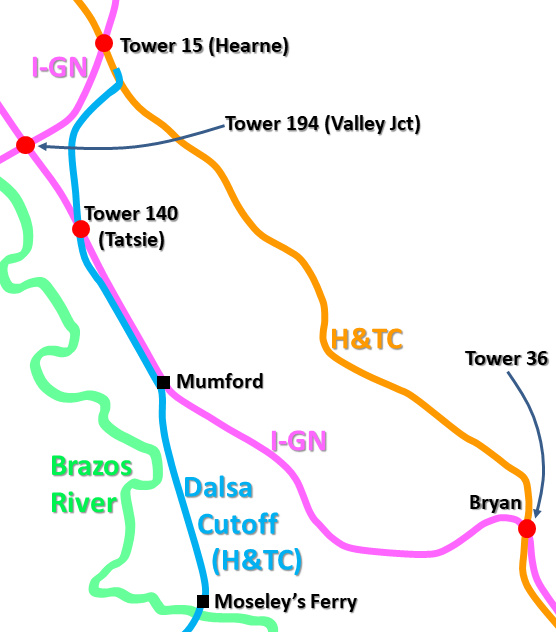
Above: Rail line
heritage in the vicinity of Hearne
|
|
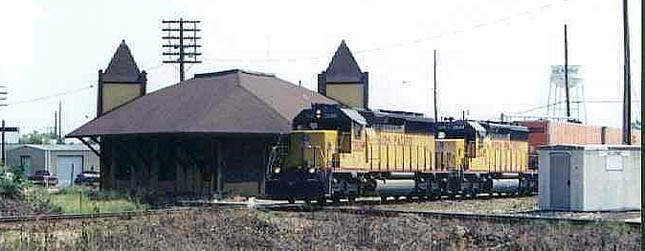
Above: An eastbound UP freight on the former I-GN main line from Laredo
to Longview crosses the former
Tower 15 diamond in front of the abandoned Union Depot in Hearne in August,
1999. (Jim King photo)
Below: The Hearne depot was relocated (yellow) across the highway from
the original site (red) and restored as a heritage and history display center
that opened in 2011. (Google Earth image)
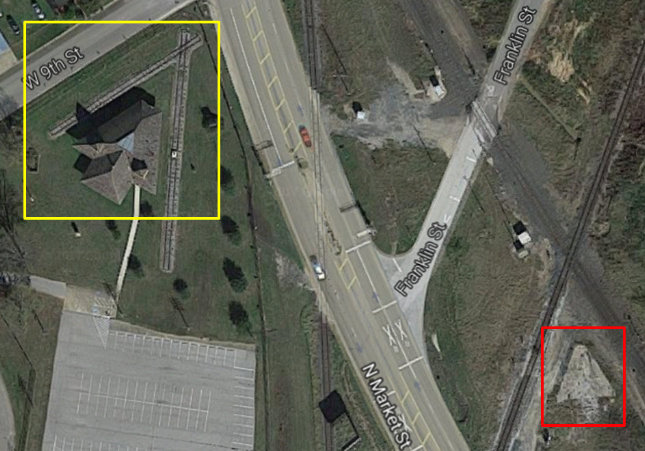
Below: The 1925 Sanborn Fire Insurance map of Hearne shows that Tower 15 was a
two-story structure located across the I-GN tracks from the Union Depot
(magnification at right). The
Barriger photo above shows that it did not remain in place much longer.
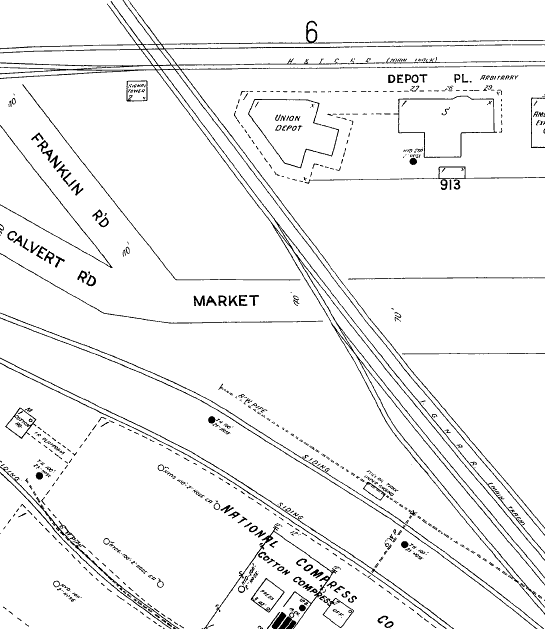
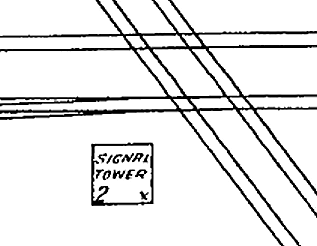
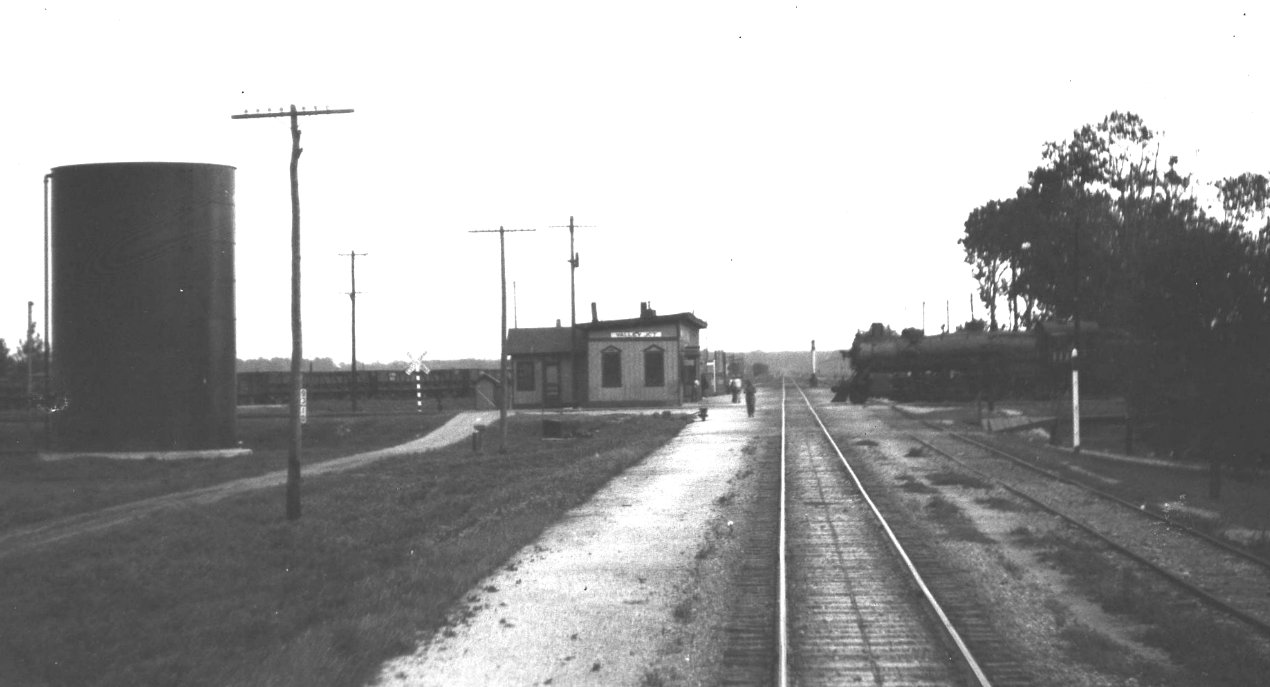
Above: The "Valley Jct"
sign is readable in this photo taken by John W. Barriger III from the rear
platform of his business car, probably in the 1930s. The view is to the
southwest toward Taylor.
Below: Shortly after the
above photo, Barriger snapped another one.
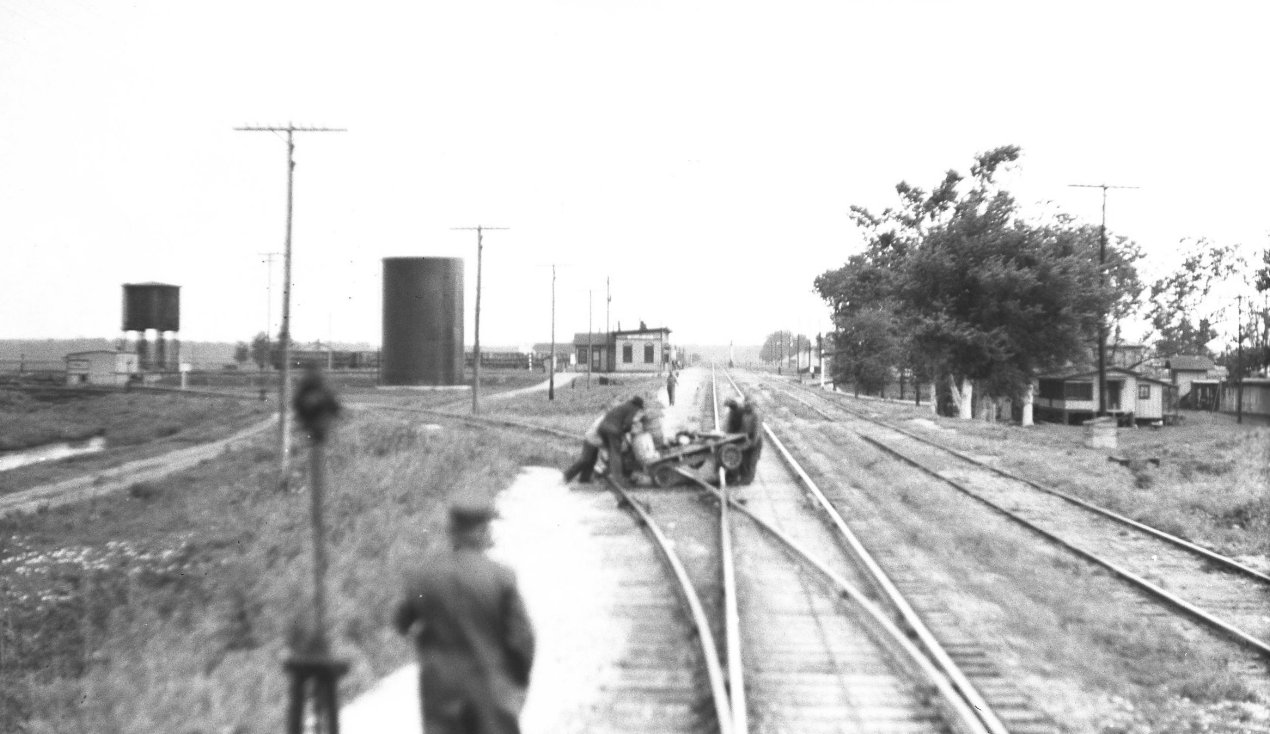
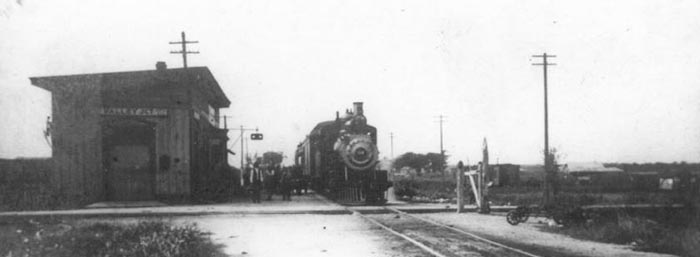
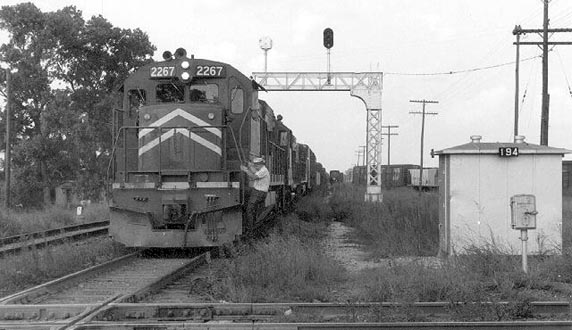
Above Left: "Valley Jct" is barely
visible on the side of the depot in this undated photo. (Mark Nerren
collection) Above Right:
Missouri Pacific locomotive 2267 prepares to perform local switching duties at
Tower 194 just west of Hearne on July 20, 1975. Note the interlocker controls on
the stand adjacent to the cabinet. (R. J. McKay photo)
Satellite Image, Tower 194, Valley Junction
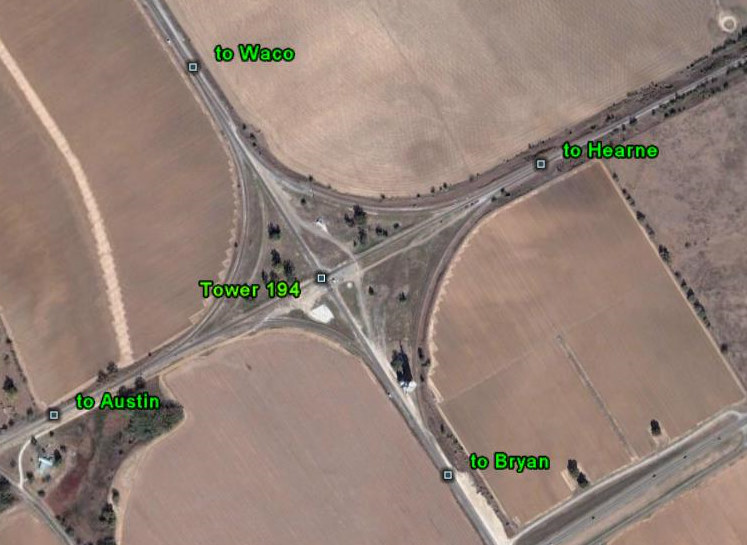
Satellite Image, Tower 15 Vicinity in Hearne
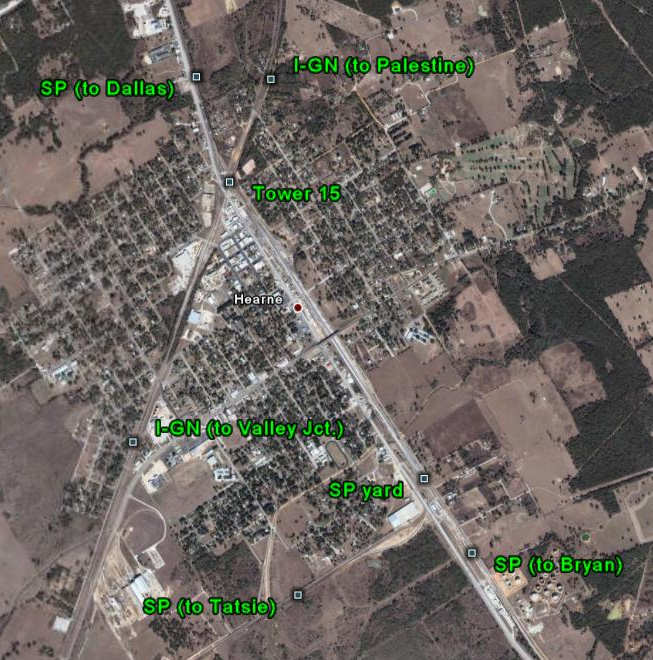
Satellite Images, Tower 140 Site
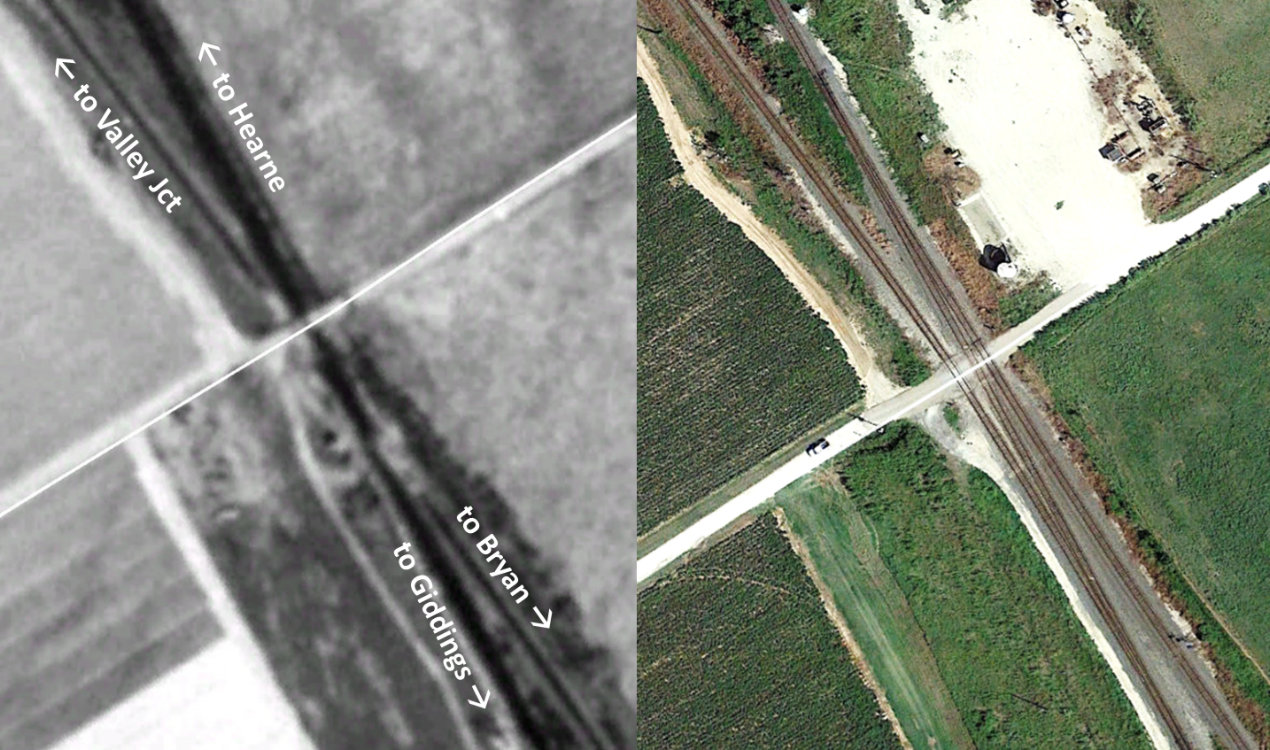
Above: These satellite images
of the Tatsie crossing show the changes resulting from the 1996 UP/SP merger. Prior to the merger, the UP line (between Bryan and Valley Junction) and SP's Dalsa Cutoff (between Giddings and Hearne) crossed at an acute angle (left,
1995). The merger
allowed UP to revise this junction to eliminate the crossing diamond in favor of
two switches and a connecting track (right,
2017). The revised design is optimized for traffic
flow on the Dalsa Cutoff, while also permitting traffic to flow between Giddings
and Valley Junction, and between Hearne and Bryan, if necessary. Traffic flow between Valley
Junction and Bryan is not supported.
Brazos Yard Construction
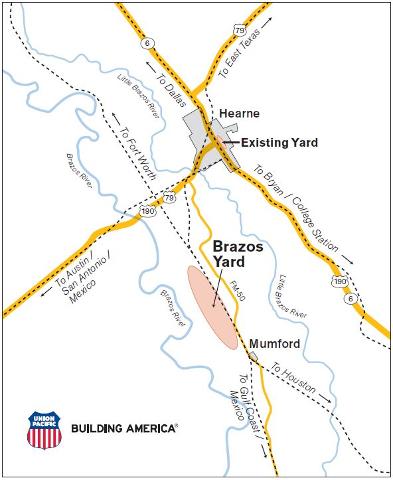
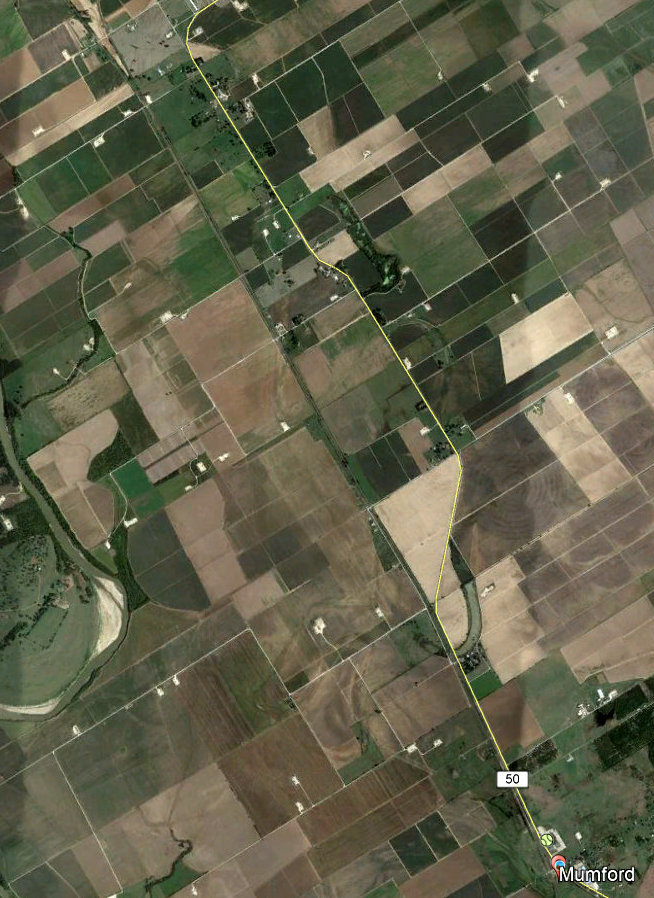
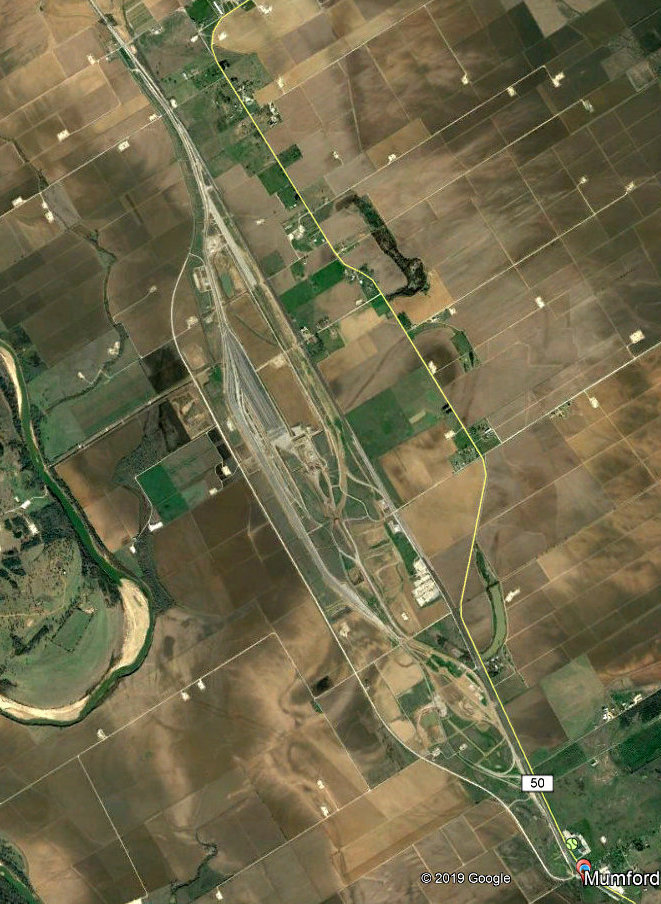
Above: In 2018,
UP
began construction of Brazos Yard, a 1,875-acre freight car classification yard located
between Mumford and Tatsie. Less than a year later, UP unveiled a new strategic
plan to use Precision Scheduled Railroading (PSR), a shift that would
reduce en route car classification activities. UP began reviewing the
construction plan for Brazos Yard to determine how it would be used consistent
with PSR, and in April, 2019, it officially
"paused" construction on Brazos Yard. In January,
2021, UP
announced a $278 million "non-cash impairment charge" against its financial
results to write down the value of the yard to a lower level commensurate with
their new plan to use it for freight car block-swapping instead of
classification. The satellite
images above show the substantial construction that was accomplished before the
"pause". [September, 2017 (left)
and December, 2019 (right), Google
Earth images; map
courtesy of Union Pacific]

















